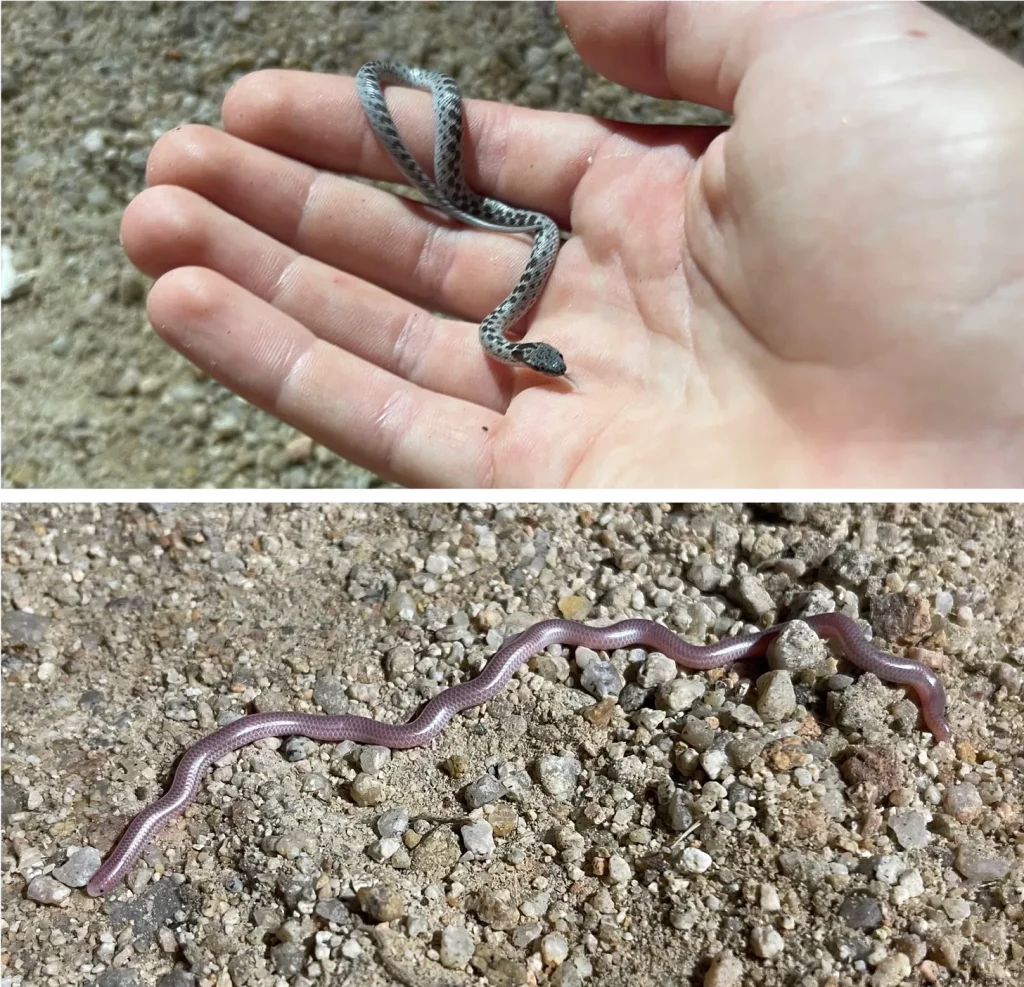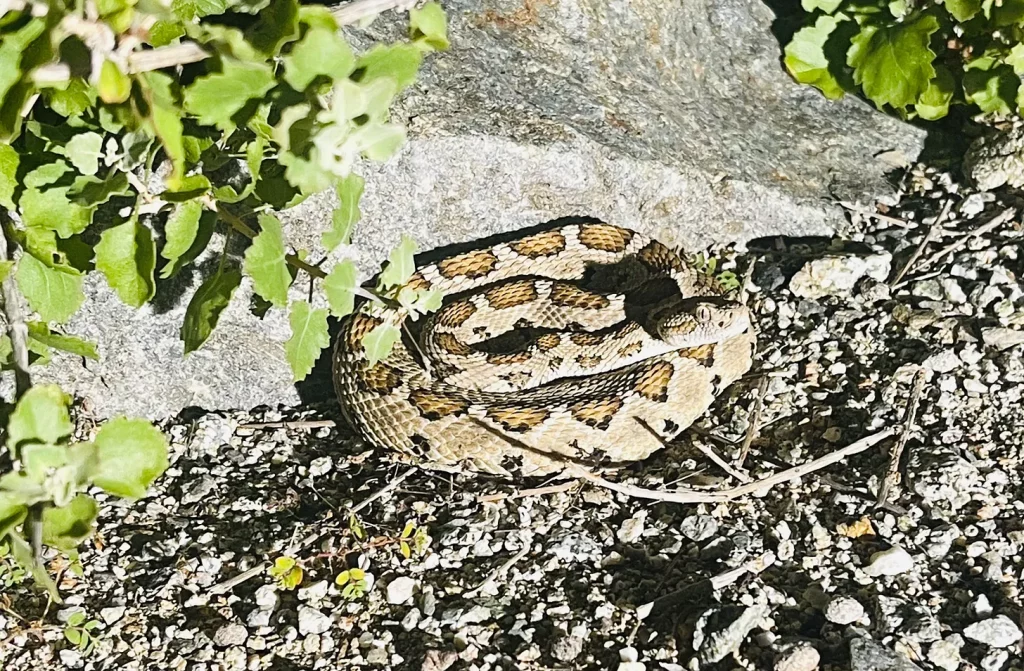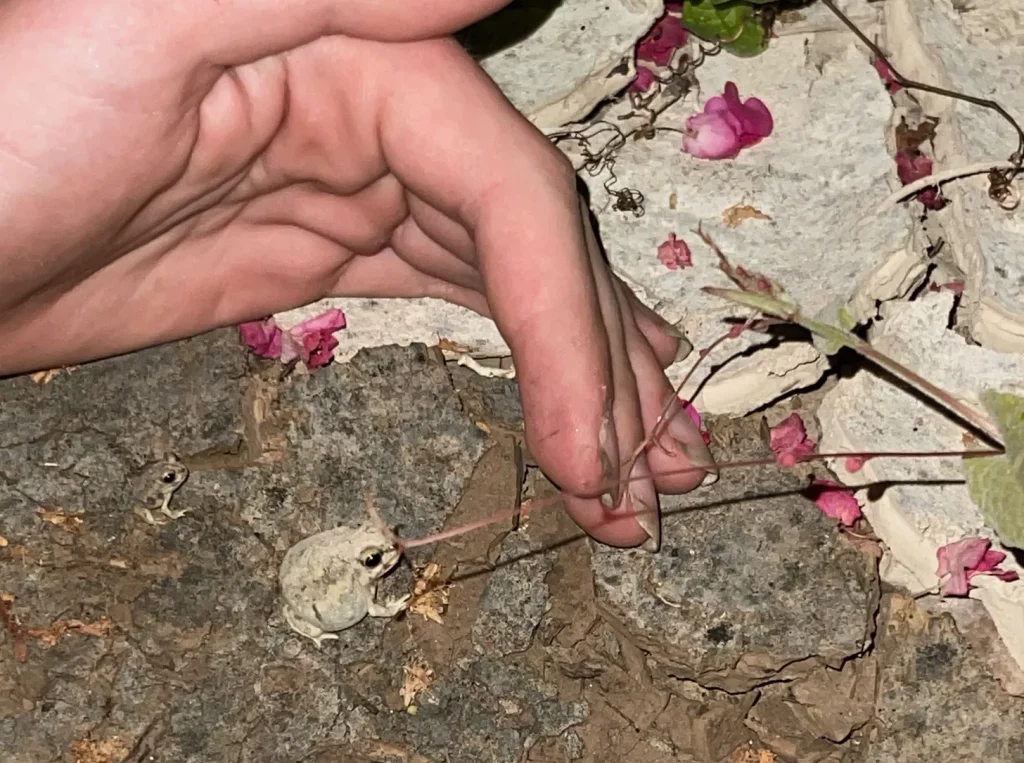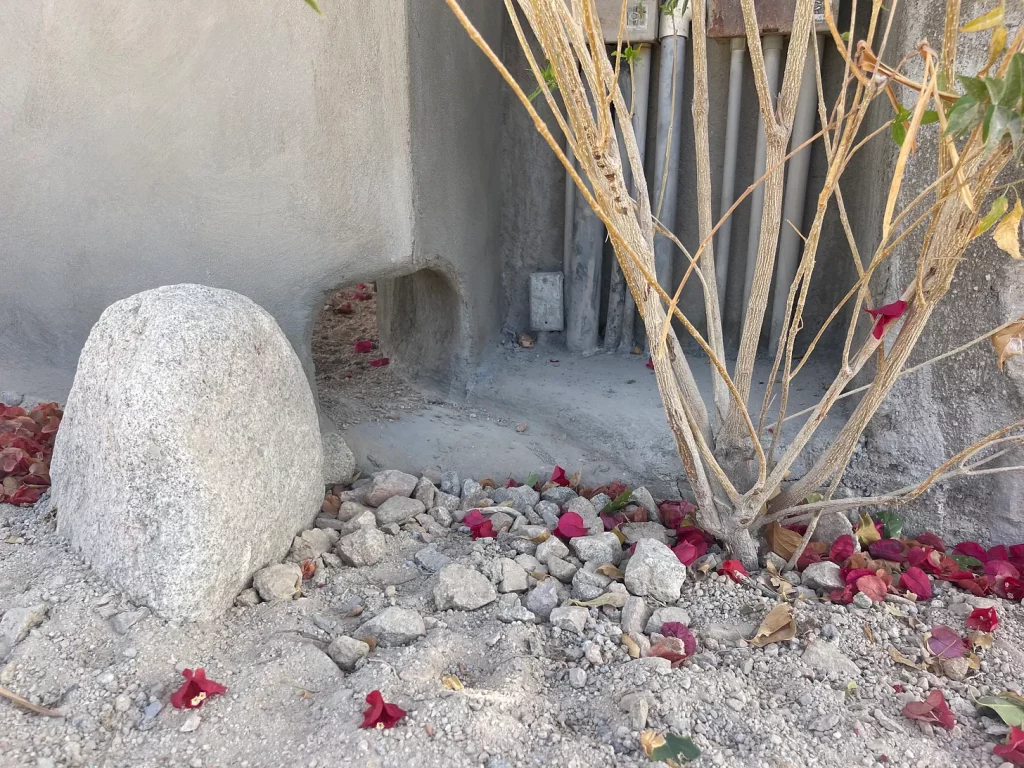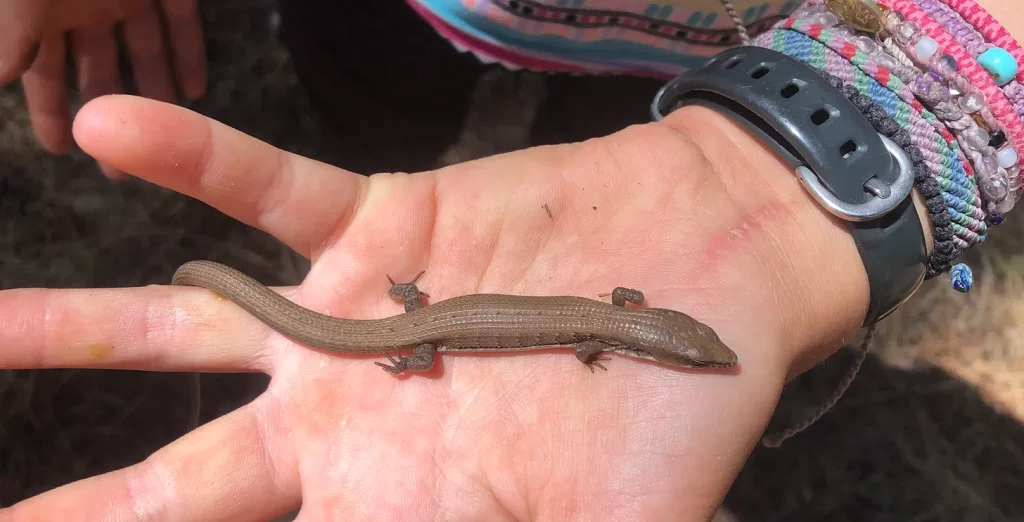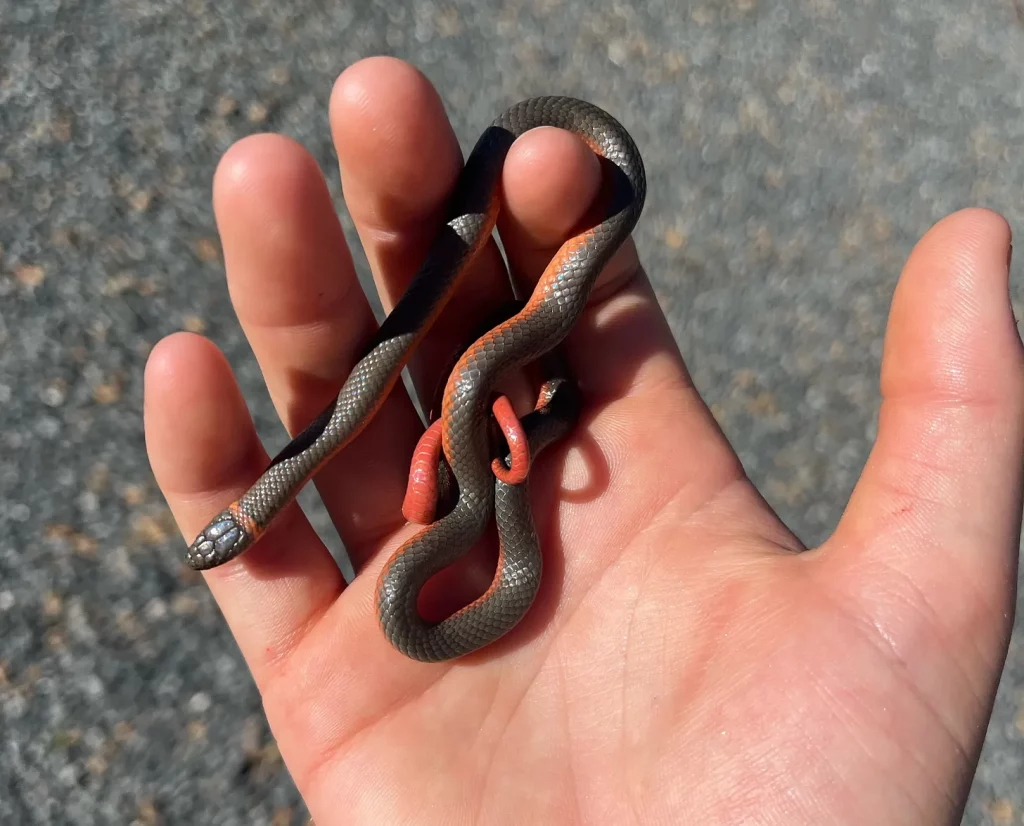This week I am featuring La Ventana’s five most common snakes. There are around 15 snake species in our town, so many of the less common snakes are not covered in this column, but the snakes below account for about 80% of the questions I receive!
1. Baja California Coachwhip: These large, day-active snakes reach lengths of over six feet! They are extremely fast and come in an array of colors; around here, they are typically black. They are semi-arboreal, meaning they spend a good bit of time up in trees. They are completely harmless. Here are two photos of different colored coachwhips.
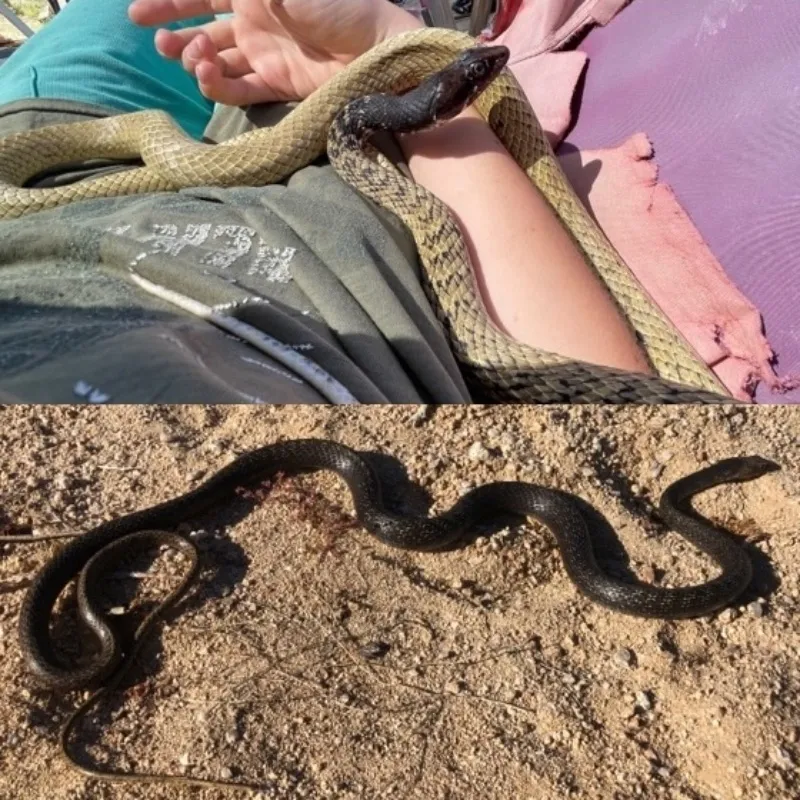
2. Cape Gopher Snake: Cape Gopher Snakes are large and beautiful snakes. They are particularly active during the shoulder seasons (spring and fall) and have incredible patterns. They are completely harmless.

3. Coast Night Snake: Coast Night Snakes are small, nocturnal snakes commonly found slithering around yards or underneath surface debris. These snakes are usually gray, and are commonly confused with rattlesnakes because they have vertical pupils. They, too, are harmless.

4. Western Patch-Nosed Snake: Western Patch-Nosed Snakes are quick, agile snakes that specialize in hunting whiptail lizards. These snakes have large eyes and crème and brown-ish black stripes. They spend a good bit of time with their heads down holes, as this is one of their best hunting methods. Once again, they are harmless.

5. Red Diamond Rattlesnake: Red Diamond Rattlesnakes are large, impressive and easily-identifiable snakes. They will usually support a large rattle, and often use it! These snakes are not really present in town anymore, but can be found just a bit up in the hills, including on mountain bike trails. They are dangerously venomous, and it is best to leave them their space.

